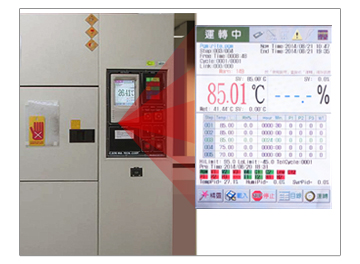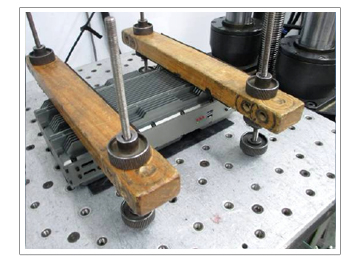To achieve smooth operation in harsh environment, the ability to withstand vibration as high as 5grms, 30~50G of shock is indispensable. These environmental disturbances are to be conquered with the toughest design and components. PERFECTRON’s products undergo environmental testing to guarantee reliable performance under a variety of conditions, such as mechanical shock, extreme vibration, temperature shock, and power interruptions.
For railway application, EN50155 classification is deemed the supreme standard. Our RC product line (RC100/RC200), specifically designed for mass transportation purpose, is in accordance with the class limits. The criteria fulfill customers’ demands on the following domains.
• Reliability and sustainability (Long MTBF)
• Endurance for extreme temperature, shock, vibration
• Consistent performance
• Compliance with Electromagnetic Interference Requirements
• Compliance with Mechanical Requirements (IEC 60068-2-1 & IEC 60068-2-2)
• Compliance with Temperature/Humidity Requirements (-40℃~85℃)
For defense and military applications, Perfectron’s extreme rugged SR series products(SR100, SR200, SR700) are tested in accordance with MIL-STD-810G standard. Below are the testing methods,
extreme rugged SR series products(SR100, SR200, SR700) are tested in accordance with MIL-STD-810G standard. Below are the testing methods,
Test Specification:
Shock Test (Operating)
Wave Form: Sawtooth Wave
Acceleration: 20g
Duration Time: 11mS
No. of Shock: 3 times (Each axis)
Shock Direction: ±X, ±Y, ±Z axis
Supreme quality is verified by the comprehensive tests we conduct during production and before delivery. Our boards and systems are compliant with the following standards.
EN50155 compliant
CE/FCC
IEC 60068-2-1 compliant
IEC 60068-2-2 compliant
• MIL-STD-810G, Method 507.5 (Temperature & Humidity)
• MIL-STD-810G, Method 514.6 (category 20 & 24, 3G vibration)
• MIL-STD-810G, Method 516.6 (Mechanical Shock, 40g)
• MIL-STD-810G, Method 501.5 (Storage@ high temperature, 85℃)
• MIL-STD-810G, Method 501.5 (operation@ high temperature, 85℃)
• MIL-STD-810G, Method 502.5 (Storage@ low temperature, -40℃)
• MIL-STD-810G, Method 502.5 (operation@ low temperature, -40℃)
• MIL-STD-810G, Method 503.5 (Temperature Shock, -40~85℃)
